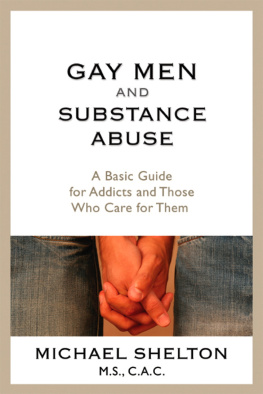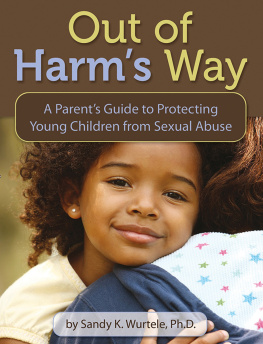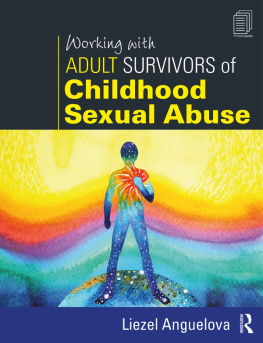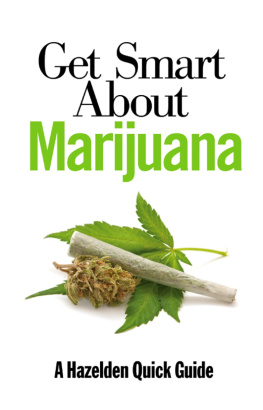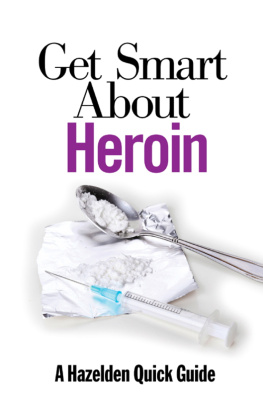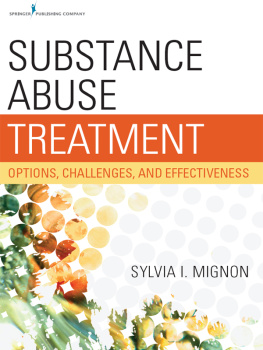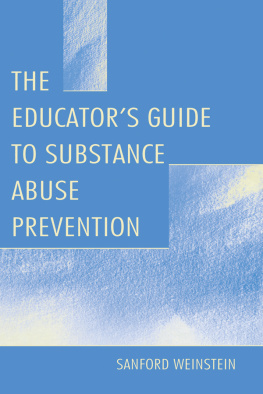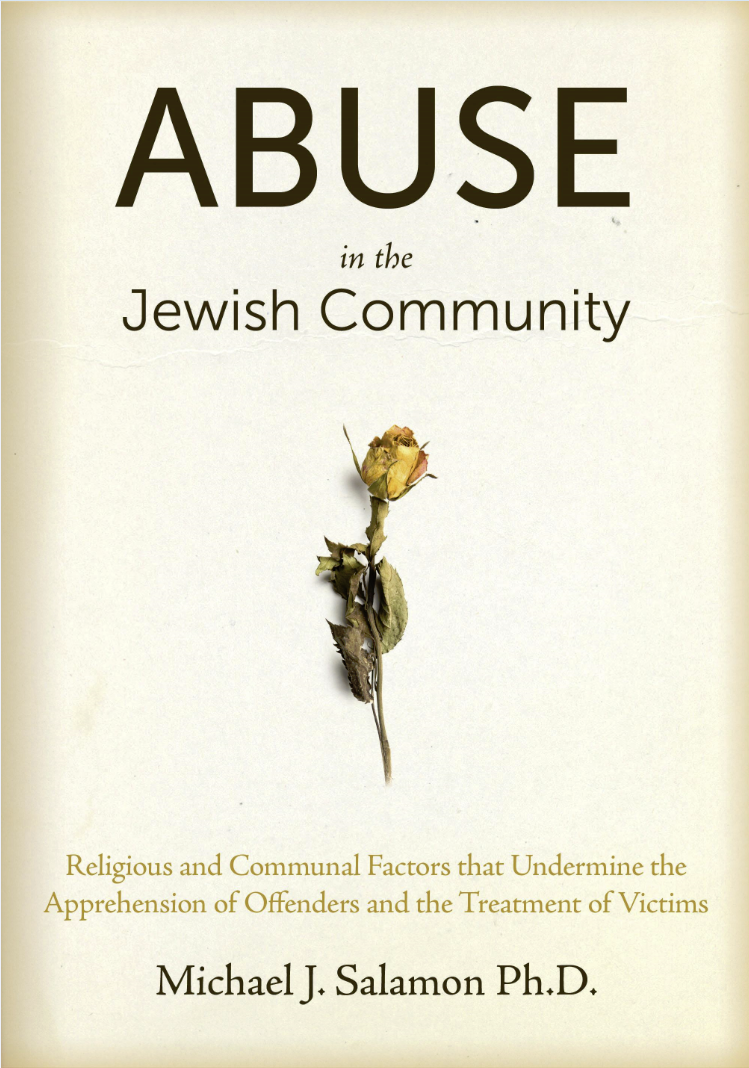Abuse in the Jewish Community
ABUSE
in the
Jewish Community
Religious and Communal Factors that Undermine the Apprehension of Offenders and the Treatment of Victims
Michael J. Salamon, Ph.D.
Urim Publications
Jerusalem New York
Abuse in the Jewish Community:Religious and Communal Factors
that Undermine the Apprehension of Offenders
and the Treatment of Victims
by Michael J. Salamon, Ph.D.
Copyright 2014, 2011 by Michael J. Salamon, Ph.D.
All rights reserved
No part of this book may be used
or reproduced in any manner whatsoever without
written permission from the copyright owner,
except in the case of brief quotations
embodied in reviews and articles.
ePub ISBN 978-965-524-137-2
Mobi ISBN 978-965-524-160-0
PDF ISBN 978-965-524-174-7
(Hardcover ISBN 978-965-524-064-1)
Cover design by Tamara Sehayek for The Virtual Paintbrush
ePub creation by Ariel Walden
Urim Publications, P.O. Box 52287, Jerusalem 91521 Israel
www.UrimPublications.com
This book is dedicated to the many people
I have learned from and have tried to help.
My wife, children, and extended family have, as always, been a source of strength, support and nurturance. I love my work but it is they who encourage me to make it fun.
Contents
Preface
I t was only in the 0s that the Catholic Churchs sexual abuse scandal in the United States began to hit the media in a significant way. Since the late 0s though, there have been increasing reports of abuse by priests, reports that were circulated among parents, mental health professionals and community members. When the media began to report the scandal, and what the media has steadily reported since, is widely accepted as being only the tip of the iceberg when it comes to this very large problem. A story in the Boston Globe in 2 indicated that the Boston diocese secretly settled sex-abuse claims against over seventy priests going back at least ten years. At the same time a report from Arizona indicated that the Church settled an abuse case involving nine altar boys, another young man and four priests that allegedly began in the 0s. In Ireland, the Church paid out over $0 million to settle hundreds of cases in which priests, nuns, Catholic school teachers and others sexually abused children. The Church in Germany is only now beginning to acknowledge a child sex abuse scandal going back forty years to the 0s that continued for decades (Kulish 0; Kulish and Donadio 0). It has also been estimated that the Catholic Churchs scandal involves some 0 priests and tens of thousands of victims; but while seemingly great in number, they are only a very small fraction of the actual number of individuals who have been abusing and those who have been hurt in these scandals worldwide (Donadio 0; Sipe 5). In Brussels a commission put together to study abuse by priests acknowledged that at least thirteen individuals abused by priests committed suicide, over 0 official complaints had been made over five decades and one as far back as ninety years and that many of the reports made to the Church hierarchy were ignored (Castle 0).
Interestingly, the Churchs reactions suggest a bureaucracy that may be unable to maintain control over its representatives. Some have argued that because of the oaths of celibacy priests are required to take, the sexual abuse problem is a uniquely Catholic dilemma, but of course, sexuality and sexual acting out is not an exclusively Catholic problem. Every religious denomination has seen increased reporting of clerical abuse scandals. Not surprisingly, a nationwide survey done in 8 found that one in four Protestant clergy members who do not have an oath of celibacy reported having sexual contact with someone other than a spouse (Thoburn and Balswick 8).
In 6 Hedda Nussbaum, a childrens book editor, and Joel Steinberg, an attorney who handled adoption cases, moved into an apartment together where they shared a chaotic, tumultuous, even abusive life. Under very questionable circumstances they took custody of two-year-old Lisa in 1 and later another toddler named Mitchell. In 7, according to police reports, Steinberg hit Lisa so severely that she died. Hedda did not report the situation to the police for approximately ten hours. This case of domestic violence made the newspapers and even today the mere mention of Heddas name elicits a strong reaction and heated discussion about domestic violence. Most argue that, from the pictures and descriptions of their lives together, Hedda was an abused wife and the case was an extreme example of domestic violence perpetrated by Steinberg on Nussbaum and Lisa. Others, while acknowledging the severe abuse that Hedda suffered, suggest that she was just as culpable for the death of the child. This is occasionally dismissed as an extreme case but others, no less horrific, are often reported in the media but too easily overlooked. For example, a former child-abuse prosecutor who worked in the District Attorneys office and his wife were reported to have allegedly beaten their eight-year-old daughter for about seven hours while she was naked (Schram and Weiss 0). It is only the paradox of the abusers professional experience that likely caused this case to receive any attention.
Interestingly, while the frequency of reports of violence and abuse are more common among the indigent and lower social classes, the actual levels of domestic violence are often reportedly far more severe in more affluent neighborhoods (Vick 0; Siegel et al. 3). This is one major reason why the the American Academy of Pediatrics prepared Guidelines for screening and reporting domestic violence and abuse. Pediatricians who care for middle- and upper-class children need also be aware of the signs and symptoms of abuse.
Such is the situation with abuse and violence, regardless of the form it takes. It is usually worse and more common than most of us wish to believe, it can exist in all neighborhoods and, to some degree, we are all somewhat culpable. How many of us have ignored the signs and sounds that indicate that someone is being abused. We have the ability to call the police, but we walk away. Most psychologists, psychiatrists and social workers, at least the honest ones, will tell you that a sizable proportion of the patients that they evaluate and treat have been traumatized in one form or another by some form of abuse. It is important to understand just what that means. What constitutes abuse, mistreatment, neglect, violence and trauma?
Abuse is not just the media-reported cases. Abuse consists of a variety of situations that impact peoples lives every day in painfully long-term ways. This is no less so in the Jewish world. We are told that Torah is transformative, and it is. According to the laws of the Torah we are admonished to not stand idly by when someones blood is being spilled. This admonition, of course, applies to violence and abuse as well. Yet, like all humans, we rationalize our reactions and much too often, we simply walk away. All people have their reasons for rationalizing. We do as well.
This text is an exploration of what abuse is, where it happens and how we, as a culture and a religion, rationalize our reactions to it. As a result I take a broad view of abuse and violence. This is not a book about one form or another not domestic violence or childhood sexual abuse but about the broader topic of mistreatment, trauma and violence. It is not an indictment but, unfortunately, it will be perceived that way by some. Some will see it as a personal attack and a wrongful accusation. If, however, this book succeeds in shining just one candle on the subject to help prevent the hurt, get help for those who have been hurt and to help us all better understand this topic, then it will have been all worthwhile. I have taken a contrarian approach at points not to be accused as someone who is not a believer. Anyone who knows me knows that I am a believer. I take certain positions in this book and in life because the landscape of the abuse issue is so misunderstood; so many people have been hurt and continue to be hurt that it is time to confront some of the dogma in a realistic, coherent but above all, honest and direct fashion. My sincerest hope is that, through this text, I can help as many people as possible to stop the trauma of violence and abuse.



